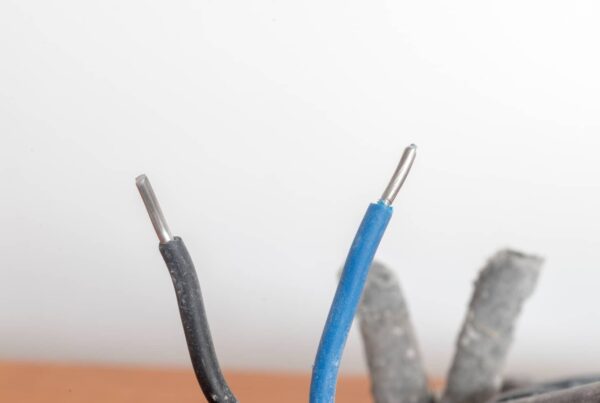Plumbing pipes in a home are in separated into two different system, supply and drain. The supply lines bring water into the home and distribute it throughout giving you fresh water where you need it. The drain lines take the wastewater out of the home with other materials that may be present including dirt and feces. The systems work together to make our modern healthy home plumbing.
The bathrooms, the kitchen, the laundry, hose bibs, and even the refrigerator all have water supply lines. We use this clean water for everything, some of it is even sent through a filter, water softener, and water heater. The distribution system usually delivers it where it is needed, typically there is valves that control the water flow. These distribution lines are made of a variety of materials from copper to Polyvinyl Chloride(PVC/CPVC). Over the years many materials have been used including galvanized metal, Polybutylene and even lead. All of these plumbing lines have life expectancies, meaning they wear out and begin to leak. Water supply lines that leak usually will cause water damage rather quickly. On many occasions, it is necessary to re-pipe the home. Copper is probably the most widely used plumbing supply line material but even that has a life expectancy. The length of time that pipe lasts can vary based on manufacturing, water supply, installation, and environment. When the lines fail, the damage can quickly flood a home, destroying the contents.
Different pipes have widely different lifespans. While galvanized pipe will only last about 20-30 years, but is not currently widely used in our area at this time. Polybutylene because of many known issues should be replaced as soon as possible. PEX pipe (Cross-linked polyethylene) has been in use for some time and in most cases doesn’t have any great issues except for some of the connections. Chlorinated polyvinyl chloride(CPVC) used in homes at this point doesn’t appear to have a limited lifespan but does appear to become brittle. We typically see copper pipes last about 50 years. The real problem is predicting when a pipe or set of pipes is going to fail in a home, because of the extensive damage it can cause.
The drain systems consist of the drains under fixtures, the vents that travel through the roof and the sewer(waste) laterals that travel under the home. The materials vary but in our area PVC, copper and cast iron are widely used. Copper like the supply lines does deteriorate, especially with the use of harsh cleaning chemicals, but is usually limited to vents that are vertical through the roof. The vents in the home are rarely an issue because they last longer than the laterals that travel under the home. Many homes are built or retrofitted with PVC products including under sinks which is usually visible. These products last indefinitely. The biggest issue we have with sewer lines and laterals is with cast iron. The metal corrodes and degrades over time, usually 40 -60 years. This then leaks the wastewater and anything in it. In our area, we usually cannot see these pipes because they are under the home. The damage they cause may take some time to present its self. When it does become known it is usually because the waster water floods the house or the soil gets washed away causing other issues, including structural.
In the course of doing a home inspection, we look at the plumbing pipes in the home. Unfortunately most of the time a majority of the plumbing pipes are not visible. As home inspectors we can only report what we can see, but that is not always enough. It is recommended that you know what types of pipes you have and how long they are expected to last. When doing remodeling or repairing of a home it is a great time to discuss with the contractor/plumber if it would be a good idea to change pipes or repipe the home or section of the home. When planning ahead it can prevent a huge problem in the future. It would also be advantageous to consider re-piping a home as the piping approaches the end of its life expectancy.
If you are purchasing a home or are curious as to what the condition of your drain lines are you can consider getting a sewer scope done. The sewer scope is a long thing camera that is sent into the drain lines to record and view the condition of the pipes. The line is accessed through a readily accessible clean out. The inspector will determine the best access point, and the report will outline where the line was entered. The camera inspection does not scope every drain line in the home or all the drain lines running underneath the house. The intent is to inspect the line that runs from the house to the final service point and to inspect this buried line for defects. This information can be used to make decisions about when to re-pipe and consider costs for such work, which is great to know before purchasing a home. We can help with this additional service if requested.
Here is a link to a video form an inspection of PVC plumbing line https://drive.google.com/file/d/15imY3jL8iqIw4UabsFZ5LmN7qy2TpEdW/view

